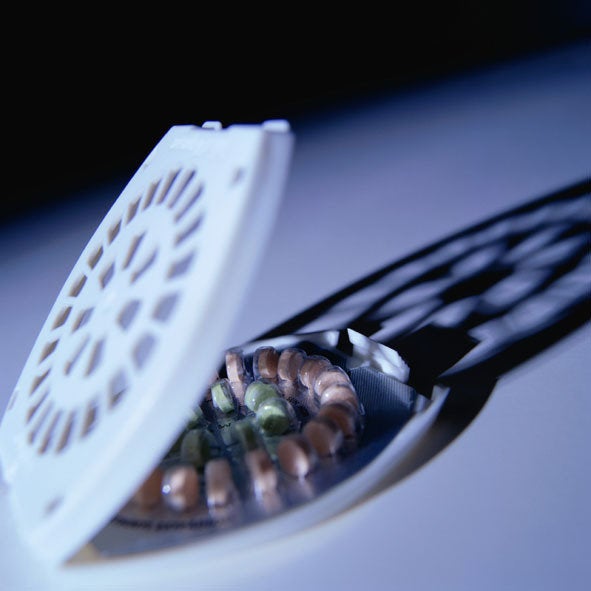
The art and science of pregnancy prevention may have a new option if French company HRA Pharma gets approval from the United States FDA. Unfortunately, debate about Ella (ulipristal acetate, approved for use in Europe since last year), will probably generate more confusion about an important option for women that is known as emergency contraception (EC).
EC is a more appropriate term than "morning after pill" as it describes methods of pregnancy prevention used after sexual intercourse... but not necessarily the morning after. Many methods are effective as late as five days after sex and in the great majority of cases EC is not used long term, hence the word "emergency." EC is often misunderstood and mistrusted as many women feel it may cause pregnancy loss rather than actually preventing pregnancy. This subtle but important distinction is a hot button for obvious reasons, but it is key to understand that EC is not developed to abort a pregnancy. After years of trying to find the "perfect" tool for family planning there are drawbacks and/or risks to every available method. The absence of the ideal method of birth control has created a vacuum for the pharmaceutical industry to fill and the amount of choices now available to women is dizzying...and often confusing. The bottom line is that unprotected sex happens, and emergency contraception is an important advance in preventing unwanted pregnancies.
Ella represents a relatively new class of hormonal modulators in that it blocks the action of the hormone progesterone. Progesterone is somewhat lesser known than estrogen, but gets its name from the fact that it is "pro-gestation." This hormone really takes a back seat in a woman's hormone cycle until right before and then after ovulation when it is sent out by the site of the released egg in large amounts in order to protect the assumed pregnancy. Without progesterone a pregnancy cannot continue, and when progesterone surges the body assumes that a woman is pregnant, for about two weeks until there is no message feedback from the pregnancy and progesterone (as well as the other reproductive hormones) falls, triggering the menstrual period.
When the birth control pill was discovered (50 years ago this year) through work ironically being done to promote fertility, the fact that a signal similar to progesterone prevented ovulation was a serendipitous discovery. It seems that in the human, once progesterone is around in a significant amount, the body will not allow ovulation... the human is built to prevent "in tandem" conception, that is a woman's body is designed to prevent her from carrying two or more fetuses that were conceived on different days. Thus, an effective way to inhibit ovulation is to increase a progesterone look-alike (substances known as progestins) to shut down ovulation. This was (in part) the concept behind the birth control pill and is the most likely mechanism of the first wave of "post-coital" (after sex) methods such as the over-the-counter option Plan B One-Step, composed of one dose of the progestin levonorgestrel. The effectiveness of progestin ECs is around 85 to 90 percent if taken within 72 hours, and they have effectiveness up to five days after unprotected intercourse. Plan B One-Step and other progestin methods are significantly more effective the closer they are taken to unprotected sex (hint: it's best not to wait until the morning after). The caveat is that if the pregnancy has already occurred, the progestin EC will not significantly affect it, and the pregnancy will not be prevented or harmed.
Ella works differently from progestins by blocking the action of progesterone rather than mimicking it. It is low dose, so depending on the timing it too may not interrupt an advanced pregnancy, but it is more likely to have a negative effect as it interrupts the protective nature of progesterone. Its mechanism makes it more effective longer (a full five days) after intercourse when compared to progestin EC (like Plan B One-Step), but there is a possible risk of negative effects on the fetus if pregnancy is not successfully prevented. Side effects of Ella may include abdominal pain, bloating, headache and menstrual irregularities. Ella may achieve FDA approval, but it is not likely to gain over-the-counter status in the US due to the complex issues surrounding the slim chance of failure. It will be difficult to compare it with the low risk nature of progestin-only EC such as Plan B One-Step. On the other hand many women do not have ready access to health care and advice about EC; the option to use Ella up to five days post intercourse will allow some women to more effectively prevent unplanned pregnancies. The package insert for the European version (EllaOne) states for every 100 users there will be approximately two women that become pregnant. It is likely that Ella will be compared to the controversial RU-486 (Mifepristone), as the biologic action is very similar. The irony lies in the fact that something similar to what is referred to as "the abortion pill" (RU-486) can be used as a means to prevent surgical abortion if it is used early enough.
The debate about Ella will likely be intense and carried out by a diverse group of (mostly) educated individuals. In the meantime there are many economically and socially compromised women who desperately need options for planned parenthood. Every "plan A" can fail, but right now Plan B is available to women over the counter (or with a prescription if under age 17), and in the US whether Ella is yet another option awaits the decision of the FDA.